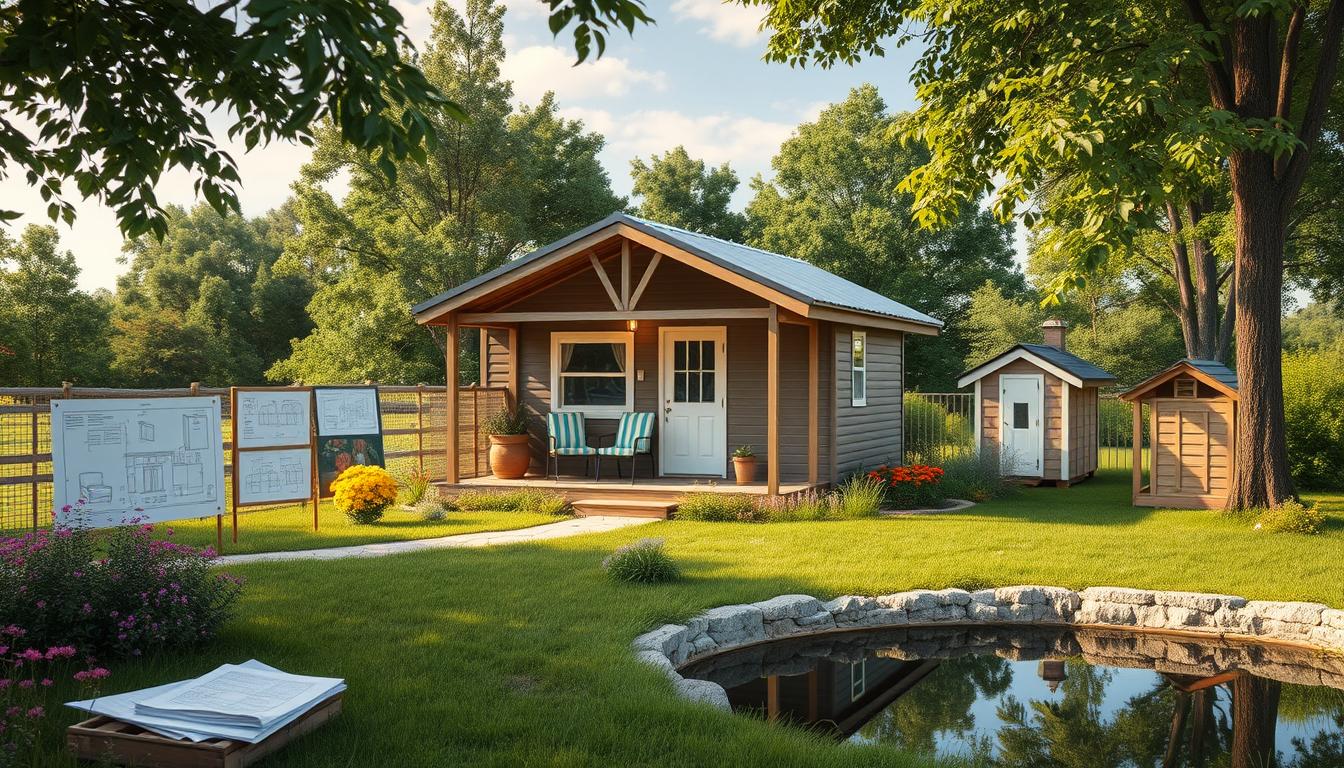Starting your journey to own a tiny house in the UK is both thrilling and daunting. That’s why we’ve put together this guide. It’s packed with tiny house buying tips to help you feel confident on this adventure. Our guide covers everything from the cost savings to the eco-friendly aspects and the appeal of a simple lifestyle.
Learning how to buy a tiny house requires careful thought. You’ll need to decide between a fixed tiny home or a mobile one. You’ll also have to check UK zoning laws and think about your budget. We’ll show you how to make these decisions and even how to make money by renting it out on Airbnb.
Key Takeaways
- Understand the main types of tiny houses available in the UK.
- Comply with local zoning laws and planning permissions.
- Consider environmental and economic benefits.
- Explore financing options including self-building and prefabricated models.
- Potential ROI through rental platforms like Airbnb.
- Average setup costs, including connection to the national grid.
- Legal locations for tiny house placement in the UK.
Understanding the Appeal of Tiny Houses
Tiny houses are becoming more popular. They attract people looking for different housing options. The focus on tiny house living, eco-friendly homes, and saving money makes them appealing.
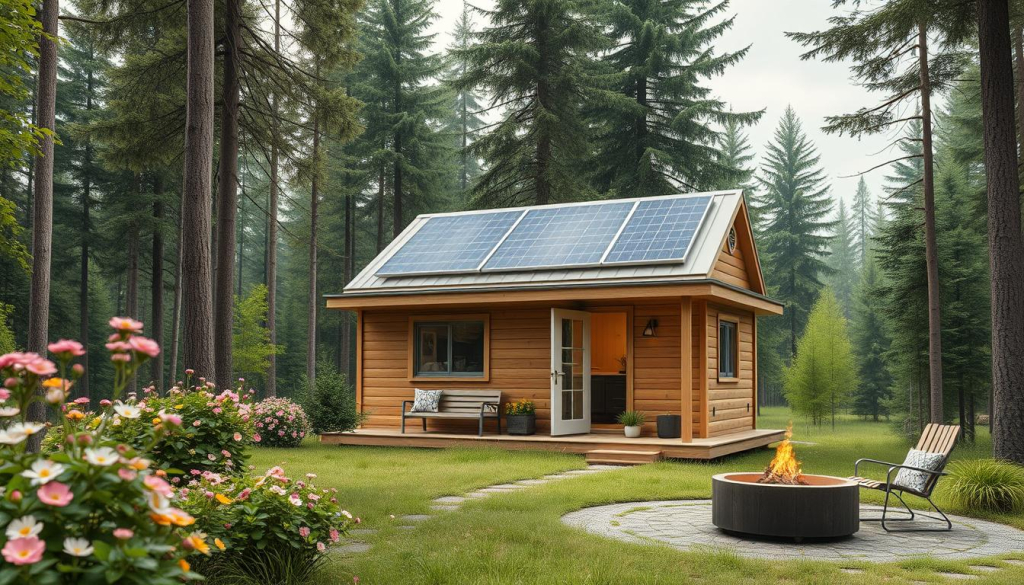
Benefits of Downsizing
Downsizing is a big advantage of tiny houses. Living in a smaller space means less clutter and stress. Tiny houses are about 37m², fitting the UK’s minimum standard.
They teach you to use space wisely and focus on what’s important. This leads to a simpler life.
Environmental Impact
Tiny houses are good for the environment. They need fewer resources to build and maintain. This makes them more sustainable than big houses.
They also use renewable materials and save energy. This shows people care about the planet. Tiny houses are a step towards living greener.
Economic Advantages
From a money point of view, tiny houses are great. They cost between £40,000 and £60,000 in the UK. This is much less than the average house price of £290,000.
They also save money on maintenance and can earn extra through Airbnb. People save £780 to £1,057 a month. This helps with financial goals and living without a mortgage.
Exploring Types of Tiny Houses
There’s a wide range of tiny house designs to choose from. Each type offers its own benefits, allowing for lots of customisation. This means you can find a tiny home that fits your lifestyle and style perfectly.
Stationary Tiny Houses
Stationary tiny houses are meant to stay put. They’re great for those who want to settle in one place. You can make them exactly how you want, making them a top pick for those seeking stability.
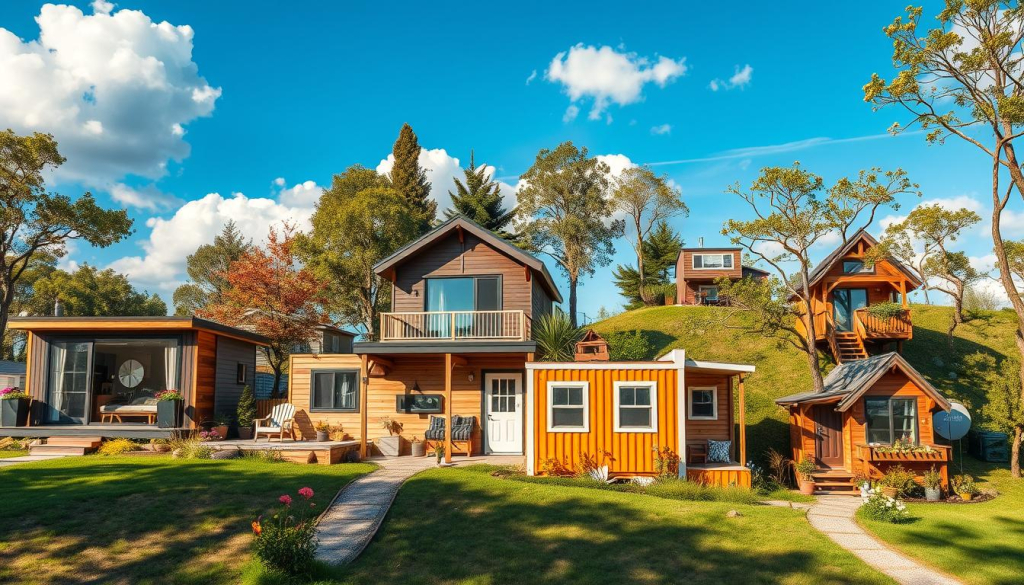
Tiny Houses on Wheels (THOWs)
THOWs, or Tiny Houses on Wheels, are super mobile. They let you travel while still enjoying home comforts. Perfect for adventurers, they offer a mix of freedom and comfort. Plus, they can be set up for off-grid living, ideal for eco-friendly explorers.
Container Homes
Container homes use shipping containers as their base. They’re strong and can be rearranged easily. These homes offer modern living spaces that can be tailored to your taste. They combine durability with creative layouts, making them a great choice for sustainable living.
Ready to Buy a Tiny House? Here’s What You Need to Do
Starting your journey to buy a tiny house means setting a budget. Tiny houses in the UK cost between £50,000 to £65,000 or more. This is about 20% less than the average UK home price. Think about your budget and how you plan to use the house.
Whether it’s for living full-time or as a rental, is key. This tiny house purchase guide will help you understand these aspects.
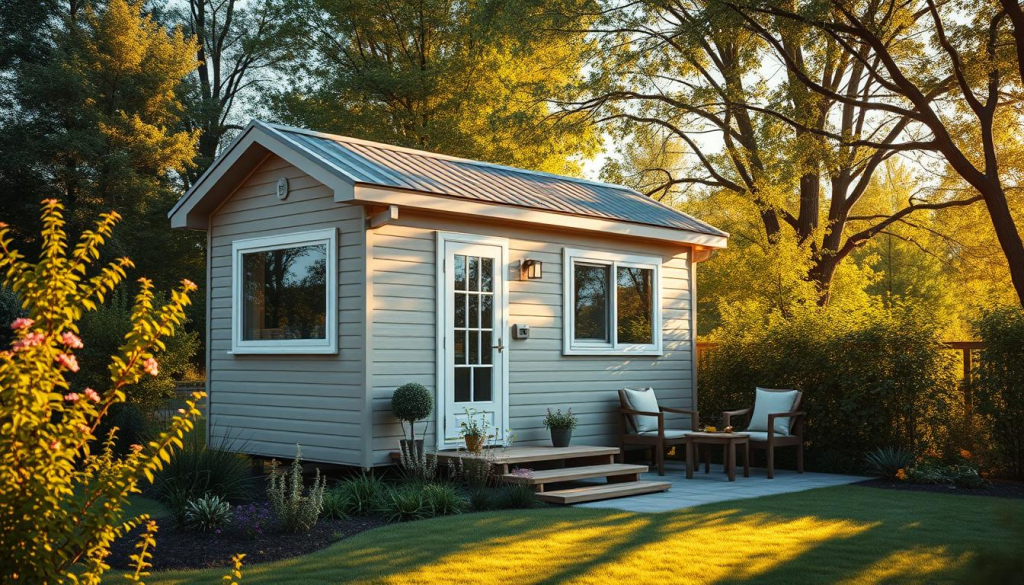
It’s important to check local laws and regulations. Knowing these laws helps the buying process go smoothly. For example, tiny houses on wheels must be no wider than 2.55m and no longer than 7m to be legal on UK roads.
If your tiny house is longer than 7m, you need a special license. Also, if it fits within 19.8m x 6.7m and is on a trailer, it might be seen as a caravan. This means it can be placed near a home, as explained by this resource.
Where you place your tiny house is also crucial. It should be close to work or nature. In areas of outstanding beauty, you need special permission. Also, you need planning permission for glamping sites and park homes.
Heating and being eco-friendly are important in a tiny house. You can use solar panels for electricity and hot water. For heating, you have electric radiators, underfloor heating, and stoves.
For those interested, ready-made tiny houses are available for sale. They are ready to go and often have eco-friendly features. Remember, if you plan to live in it full-time, it’s considered a permanent home for tax purposes.
By considering these points, buying a tiny house becomes easier. It ensures a smooth transition into the tiny house lifestyle.
Choosing the Best Builders and Financing Options
Starting your tiny house journey means picking the right builder and understanding money matters. The UK has top tiny house builders known for their skill and reliability. There are also many ways to finance your tiny home, fitting different budgets. This guide will help you understand costs and make smart choices.
Top Tiny House Builders in the UK
In the UK, many builders are experts in tiny homes. Tiny Eco Homes UK and Custom Built Surrey lead the field, offering unique homes. They use green materials and smart designs, meeting clients’ needs.
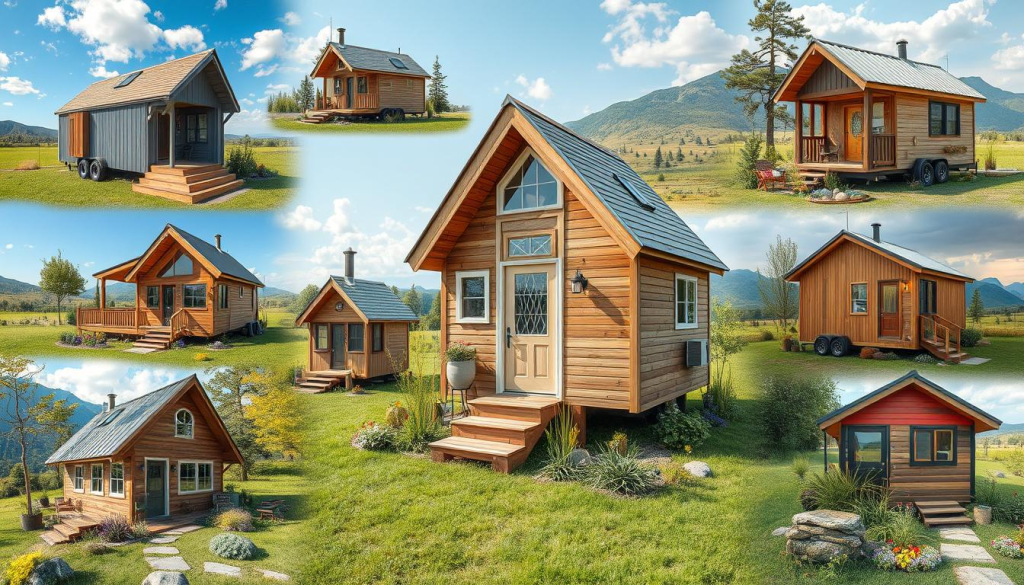
Financing Options for Tiny Homes
Getting a tiny home financed can be tricky, but options exist. Personal loans and crowdfunding are available, though rates might be higher. Specialised tiny home mortgages are another choice, needing good credit but offering better rates. Home equity loans or HELOCs are also viable if you have property equity.
“Financing options for tiny homes are diverse, allowing potential buyers to choose the best fit for their financial situation,” says industry expert Emma Watson of Tiny House UK.
Tiny House Cost Breakdown
Knowing the costs of a tiny house is key. Prices vary from £8,000 to £120,000, based on features and customisation. DIY builds are cheaper, with costs between £20,000 and £35,000. Remember to budget for site prep, utility connections, and transport too.
Don’t forget ongoing costs like heating and maintenance. These are lower than for regular homes, thanks to tiny houses’ efficiency.
- The base price of the home
- Customisation fees
- Site preparation
- Utility connections
- Transportation
- Ongoing costs (heating, cooling, maintenance)
Knowing the costs helps in planning and staying within budget. By picking the right builder and exploring financing, your tiny house dream can come true.
Conclusion
Starting tiny house living is an exciting journey. It offers economic and environmental benefits. Tiny houses, under 50m2, are a smart choice, especially with London’s high prices.
We looked at different tiny homes, like stationary and mobile ones. They are affordable and flexible. Building a tiny home can cost less than £60,000. Plus, utility bills are often under £100 a year.
Finding the right builders and financing is key. You can use mortgages, special lenders, or personal loans. Make sure to include all costs, like delivery and insurance. Our guide makes starting your tiny home journey easier.
Tiny house living offers freedom from high housing costs. It lets you focus on what’s important. It’s not just about a home; it’s a choice for a simpler, greener life. For more, visit our page and join our community.


